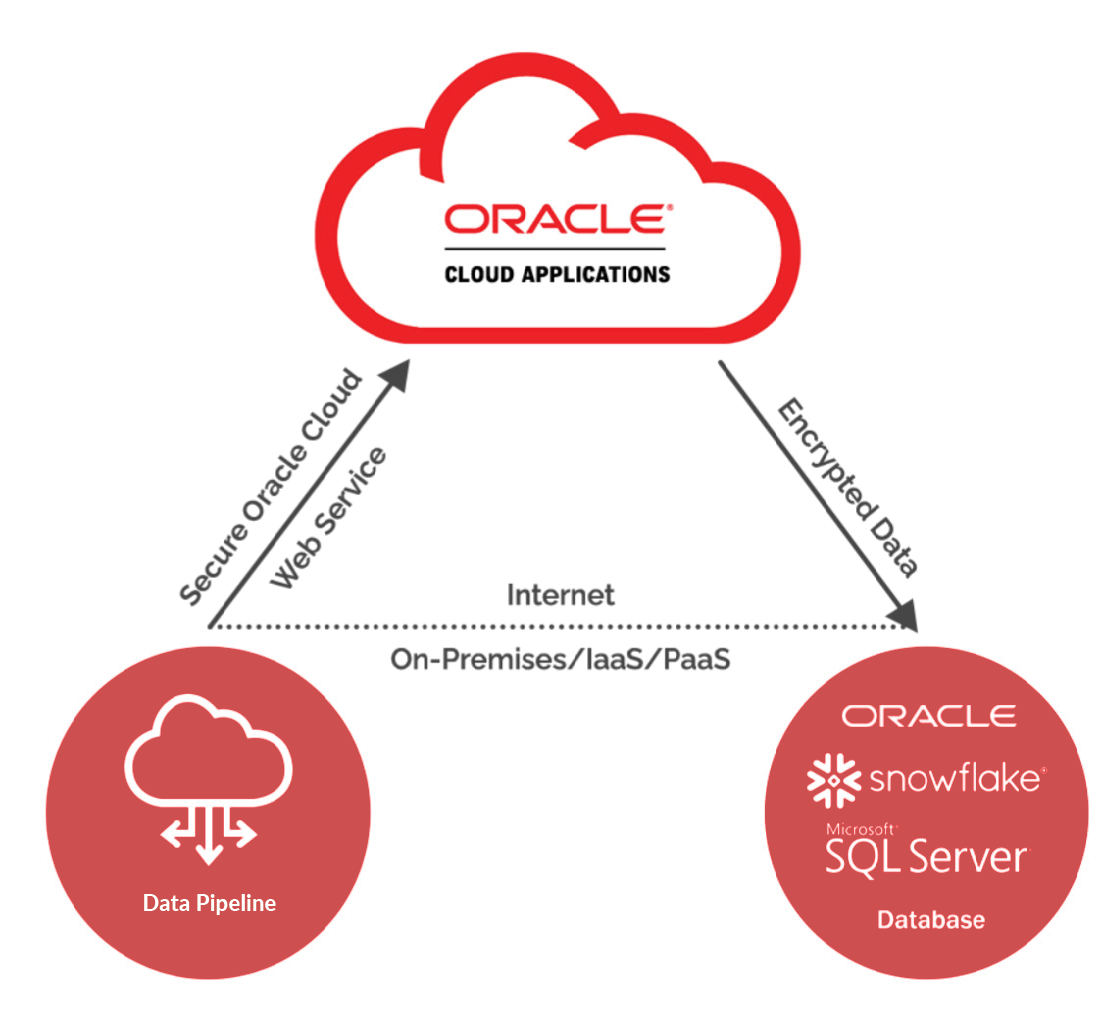Simplifying Oracle Cloud Applications Data Replication to ADW, Snowflake, and Beyond
Introduction
Replicating data from Oracle Cloud Applications to systems like Oracle Autonomous Data Warehouse (ADW), SQL Server, Azure SQL, Snowflake, and Amazon Redshift can be challenging. Organizations face long timelines, compliance risks, and potential disruptions. However, with the right strategies, you can navigate these challenges and fully leverage your data.

Tackling Data Replication Challenges
Each platform, whether on-premises like Microsoft SQL Server or cloud-based like Snowflake, has its own way of handling data. This complexity makes replication difficult. However, a structured approach can help.
Understanding the specific limitations of each platform is key. For example, Oracle Cloud Applications and SQL Server store data differently, while cloud platforms like Snowflake offer scalability benefits. Adapting your replication process to account for these differences will make transitions smoother.
Ensuring Data Security and Compliance
Data security and compliance are crucial when moving data between Oracle Cloud Applications and other systems. Regulatory requirements, such as GDPR and HIPAA, mandate stringent security measures.
To ensure security, use encryption protocols during transit and at rest. Implement access controls so only authorized personnel can handle sensitive information. Compliance is not just about legal obligations; it builds trust within your organization and with external stakeholders. Keeping your data secure and compliant throughout replication is vital for successful data management.
Reducing Costs and Minimizing Disruptions
Data replication projects can be costly and disruptive, but proper planning and the right tools can reduce these risks. A phased approach to replication, where data is replicated in stages rather than all at once, can minimize disruptions. This method allows you to monitor progress, resolve issues early, and ensure minimal impact on day-to-day business operations.
Choosing tools designed for smooth data replication can also help you stay within budget and meet timeline goals.
Key Strategies for Streamlining Data Replication
Here are some strategies to make the process of replicating Oracle Cloud Applications data easier:
1. Assess Your Data Environment
Start by reviewing your Oracle Cloud Applications setup and its connections to external systems. Identifying potential bottlenecks early will help you choose the best approach for data replication.
2. Select the Right Tools
Choosing the right toContinuous monitoring is critical for ensuring data integrity and security. Use monitoring tools to detect issues in real-time and resolve them before they become larger problems.ols is crucial. Look for third-party solutions that offer flexibility and scalability to meet the specific needs of both Oracle and non-Oracle platforms.
3. Plan a Phased Replication
Avoid moving all your data at once. Break the replication process into smaller, more manageable phases. This allows you to monitor the process closely, address issues as they arise, and avoid major disruptions.
4. Monitor Continuously
Continuous monitoring is critical for ensuring data integrity and security. Use monitoring tools to detect issues in real-time and resolve them before they become larger problems.
5. Stay Agile
Data replication can present unexpected challenges. Being flexible and adjusting your strategy as needed will help you address issues quickly and keep the process on track.
Conclusion
Replicating Oracle Cloud Applications data into systems like Oracle ADW, Snowflake, SQL Server, and Amazon Redshift doesn’t have to be overwhelming. Focus on security, compliance, and cost-effective strategies to streamline the replication process. With the right tools and a phased approach, you can manage your data efficiently and drive innovation and growth.

Sumit Dahiya
Technical Director, SplashBI
With 20 years in business analytics and software development, Sumit Dahiya stands out as a versatile expert across several sectors. As SplashBI’s Technical Director, his duties span product development to Oracle Fusion Cloud Applications reporting. He excels in integrating and managing critical business software, whether cloud-based or on-premises. Starting at Oracle, Sumit has become a recognized figure, frequently speaking at Oracle User groups. His expertise fuels SplashBI’s drive towards innovation and excellence.
Related Posts


Streamline Oracle Cloud Data Replication with Key Strategies


Oracle Fusion Reporting Tools Guide for Better Insights







